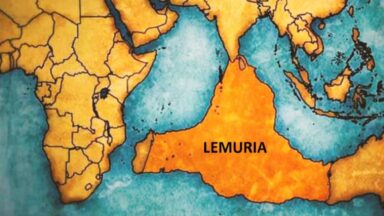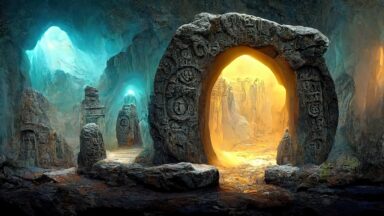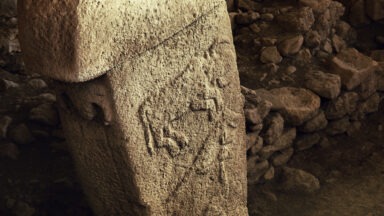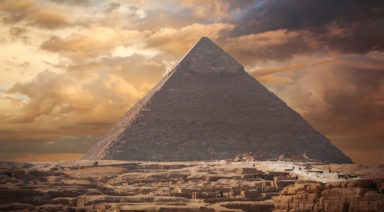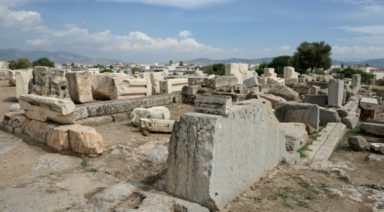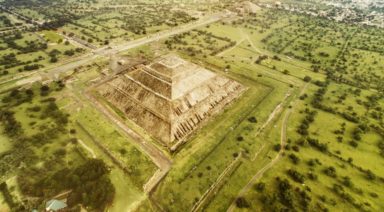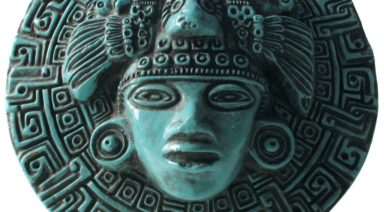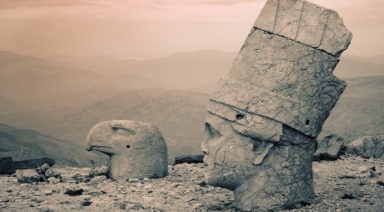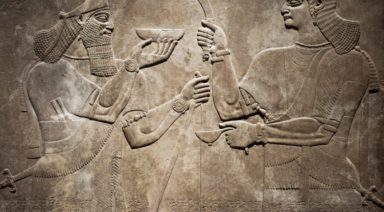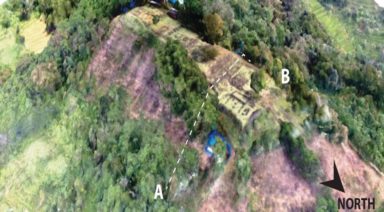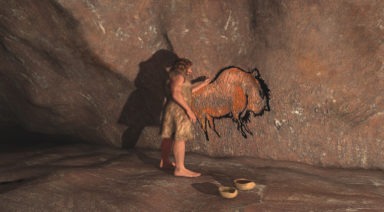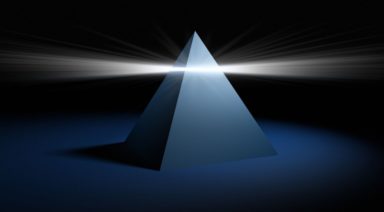The Pre-Adamites: Did Humans Inhabit Earth Before Adam and Eve?

The timeline of human existence has captured the attention of philosophers, scientists, and ordinary, curious people throughout the ages. Of course, there is the famous tale of Adam and Eve, but were they truly the first humans to walk the Earth? There is a growing body of research that suggests modern humans were not the first intelligent beings to live on our planet.
Did Pre-Adamites Exist?
There are groups from all belief systems — Christians, conspiracy theorists, alien researchers, evolutionists, and more — who believe pre-Adamites (humans or intelligent beings that walked the Earth before Adam) actually existed.
The idea of the possibility of a pre-Adamite civilization and discussion about the origin of the human race is not a new one. Debates on the topic have been taking place since 170 AD. Over the years, many theories swirled about, enticing logical and romantic thinkers alike to explore further, look deeper, and question what they had been taught.
The Christian Debate
A growing number of Christians and people of other faiths believe modern-day humans were not the first — and possibly are not the last.
The Bible has clear passages about events that have taken place and that will take place at some point, stating human existence operates on a 7,000-year cycle. Based on scripture now, the Earth is only a little over 6,000 years old. However, a great deal of scientific evidence indicates it is much, much older.
The Bible does not specifically state Adam was the first man ever to walk the Earth. There are too many gaps in the information contained in that chapter to get a clear picture.
Consider the account of Noah and the Great Flood. All humans were wiped out, except for Noah and his family. It’s quite possible a new Adam and Eve were born out of this catastrophe, starting the cycle anew. Therefore, it’s not entirely irrational to have doubts over whether or not Adam and Eve were truly the first humans on Earth.
In the book of Genesis, we read the Earth was without form and void — as if it had experienced a great catastrophe. We know from scripture that water already covered the Earth, and scientists are now finding, under the great bodies of water of the world, evidence of entire civilizations. These findings raise more questions than answers. How do we mesh science with scripture? Is it possible?
Many events documented in the biblical texts seem to be supported by science. Can these two seemingly oppositional systems coexist and come together to give us a more complete picture of where we came from?
Consider that the original biblical texts have been translated repeatedly. The version we use today has only been around since the 1600s, and the Catholic church uses a heavy hand in changing the scripture and the structure of the book itself. If you stop and think about it, perhaps we’ve lost something in all the edits and translations. Maybe we don’t have the whole story.
Keep in mind, there is nothing new under the sun (Ecclesiastes 1:9).
The Scientific Debate
Traditionally, science and religion are diametrically opposed, with religion calling for faith and science calling for fact. However, scientific findings in recent years seem to be closing that gap.
Scientists present evidence that dinosaurs once roamed the Earth. Christians open their Bibles to the book of Job to read about what appears to be dinosaurs coexisting with humans. More recently found civilizations and objects defy all scientific and biblical teaching.
Throughout the world, ancient cities are being discovered; not on mountaintops or in forests, but under the ocean. These include:
- Port Royal, Jamaica
- Lion City of Quiandao Lake, China
- Nero’s sunken city
- Cleopatra’s Palace in Alexandria, Egypt, and Thonis-Heracleion in Egypt
- Sunken city of Cuba
- Dwarka, India
- Yonaguni Monument, Japan
What are these ancient underwater cities? Are they evidence of a pre-Adamite civilization? Many of them have elaborate structures and display a level of technology scientists say was not possible at the time they would have been in use. Could carbon dating and other methods scientists use to date materials really be that far off? That’s not just a decade or two but a multi-billion-year error. Scientists believe they have definitive evidence or are at least very close, to support their timelines.
Some scientists believe they have found evidence of the inhabitants of some of these civilizations. A flash frozen civilization in Antarctica is of particular interest. The skeletons looked vaguely human except for the elongated skulls. Who were they? What were they? Scientists speculate an ancient race that has long since died out.
Conspiracy theorists, on the other hand, believe they are an alien race that came here to escape their dying planet. They set up their civilizations and “seeded” the Earth. That is what we humans are.
Everyone has a story, a theory about what took place. The truth is, there are very strange things on this planet that cannot be explained by our current understanding of history, science, technology, and culture. What do we do? We press on. We continue to explore. We keep our minds open and keep searching for the truth.
Regardless of our belief systems, nothing can be learned by blindly walking through life ignoring what does not fit in the history books. Skeptics must acknowledge these ancient civilizations are real, and they were left here for a reason. Why weren’t they destroyed? Is this part of an elaborate puzzle, a higher test to separate the wheat from the chaff?
As for the scientists, are they doing all they can? Is science truly utilizing all available resources to explore these civilizations and search for clues that would change the way we view society and the world? The fact that these structures and entire cities were left behind and buried, only for us to find them so many years later, suggests intent.
When you are deciding what to believe, the greatest tool that can be sharpened and utilized is your critical thinking.
Want more like this article?
Don’t miss Ancient Civilizations on Gaia. Inside we take you on a journey through humanity’s suppressed origins to reveal the secret code left behind by our ancestors.
The History of Lemuria: Discover the Lost Continent
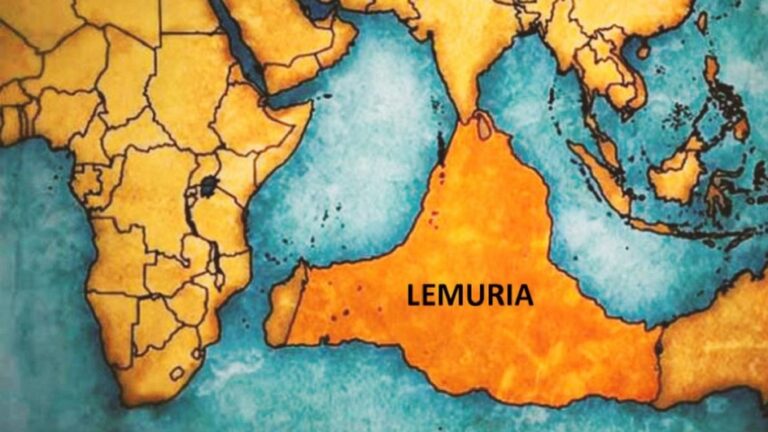
Lemuria was a vast continent that existed in the Pacific Ocean, inhabited by an advanced and spiritually developed civilization. It significantly influenced human evolution and left a legacy that endures to this day. In this article, we explore what Lemuria was, its origins, evolution, and impact on human history.
Table of Contents
- What Was Lemuria?
- Origins and Evolution of Lemuria
- Life in Lemuria
- Lemurian Technology and Knowledge
- The Relationship Between Lemuria and Atlantis
- The Fall of Lemuria
- The Legacy of Lemuria
What Was Lemuria?
Lemuria was a continent located in the Pacific Ocean, home to one of the earliest advanced civilizations on Earth. The Lemurians were highly spiritual beings who lived in perfect harmony with their surroundings. Their civilization was known for its profound knowledge of energy and its ability to manipulate it for the well-being and evolution of their society.
The Lemurian civilization thrived for thousands of years, developing advanced technologies that allowed them to build great cities and temples dedicated to meditation and spiritual connection. Lemuria was also a center of knowledge and wisdom, where various spiritual and scientific disciplines were taught and practiced. The Lemurians were known for their telepathic communication abilities and their capacity to access higher dimensions of existence, which enabled them to reach high levels of evolution and consciousness.
In the series Initiation, available on Gaia, Matías De Stéfano delves deeply into how this ancient civilization influenced human evolution and its connection with other advanced civilizations, such as Atlantis.
Origins and Evolution of Lemuria
The history of Lemuria begins approximately 200,000 years ago when the Alithir, an advanced race, arrived on Earth to raise the planet’s vibration and encode the water. These highly evolved beings chose the continent of Lemuria as their home, establishing a civilization that would become a beacon of light and knowledge for the world.
The evolution of Lemuria was marked by a deep respect for nature and an advanced understanding of cosmic energies. The Lemurians developed technologies that allowed them to harness the energy of natural elements, using resonance and vibration to create sustainable structures and systems. Their ability to work in harmony with nature enabled them to thrive for thousands of years, maintaining a perfect balance between technological development and spirituality.
As Lemuria grew and evolved, it became a center of cultural and spiritual exchange. The Lemurians established relationships with other advanced civilizations of the time, sharing knowledge and technologies that would benefit humanity as a whole. This intercontinental cooperation allowed Lemuria to expand its influence and leave a lasting legacy in Earth’s history.
Life in Lemuria
Life in Lemuria was deeply integrated with nature and cosmic energies. The Lemurians lived in harmony with their surroundings, practicing an advanced spirituality that permeated every aspect of their existence. Their society was based on cooperation, peace, and balance, creating a rich culture of spiritual knowledge and practices.
- Peaceful society: The Lemurian society was characterized by its focus on peace and cooperation. There were no wars or conflicts, as everyone worked together for the common good.
- Natural homes: Lemurian homes were built with natural materials and energetically aligned with the environment. These sustainable structures provided comfort and harmony with nature.
- Spiritual education: From an early age, Lemurians received an education focused on spiritual development and connection with the universe. This allowed them to grow with a deep understanding of their place in the cosmos.
- Telepathic communication: The Lemurians had telepathic abilities, facilitating effective and profound communication among themselves. This eliminated misunderstandings and promoted greater social unity.
- Holistic health: Medicine in Lemuria was holistic, combining spiritual and scientific knowledge. They used energy and medicinal plants to heal and maintain well-being.
- Community rituals: Ceremonies and rituals were an essential part of Lemurian life, strengthening social cohesion and connection with cosmic energies. These events included collective meditations and celebrations of natural cycles.
- Relationship with nature: Daily life was synchronized with natural cycles, respecting and honoring the Earth and all its beings. This respectful relationship ensured the sustainability and abundance of resources.
Lemurian Technology and Knowledge
The Lemurian civilization was known for its advanced technology and profound understanding of natural energies. The Lemurians developed various technologies that allowed them to live in harmony with nature and harness cosmic energies for their benefit.
- Crystal energy: The Lemurians used crystals to store and channel energy. These crystals were essential in their healing and communication technologies.
- Resonance technology: They used resonance and vibration for construction and healing. This technology allowed them to create structures and regenerate tissues using specific frequencies.
- Solar energy utilization: Solar technology was highly advanced in Lemuria. They used devices to capture and store solar energy, providing a sustainable energy source.
- Coded water systems: The Lemurians encoded water with specific energies for healing and growth. This knowledge improved the health and vitality of their crops and themselves.
- Light ships: They developed ships capable of traveling through dimensions using light and cosmic energy. These ships facilitated contact with other advanced civilizations.
- Sacred geometry knowledge: Sacred geometry was used in all their constructions and technologies. Geometric patterns ensured energetic alignment and resource efficiency.
- Planetary energy networks: They created a network of connected energy points that facilitated energy transfer and long-distance communication. This network maintained balance and harmony throughout Lemuria.
The Relationship Between Lemuria and Atlantis
Lemuria and Atlantis were two advanced civilizations that existed during different periods, though there was a time when they coexisted and maintained contact. Both civilizations shared knowledge and technologies, establishing a relationship of cultural and spiritual exchange. The Lemurians and Atlanteans collaborated on several projects, mutually benefiting from each other’s discoveries and advancements.
The relationship between Lemuria and Atlantis was based on cooperation and mutual respect. The Atlanteans, who emerged after the Lemurians, adopted many of the spiritual and technological practices developed in Lemuria. This exchange allowed both civilizations to reach high levels of evolution and consciousness, significantly influencing the progress of humanity.
However, as both civilizations grew, differences in their approaches and philosophies began to emerge. While the Lemurians focused more on spirituality and harmony with nature, the Atlanteans began to develop technologies aimed at control. These differences eventually led to tensions and conflicts that contributed to the fall of both civilizations.
The Fall of Lemuria
The fall of Lemuria was a cataclysmic event that marked the end of a golden age of wisdom and peace. According to various esoteric traditions, Lemuria was destroyed by a series of natural disasters, including earthquakes and volcanic eruptions, that submerged much of the continent into the Pacific Ocean. This event was seen as a necessary energetic rebalancing of the Earth.
Before their fall, the Lemurians knew their time was coming to an end. Many of them migrated to other parts of the world, carrying with them their knowledge and traditions. These survivors established new communities in regions such as Asia, the Americas, and Africa, where they influenced the development of local civilizations and planted the seeds of new spiritual cultures.
Despite the physical destruction of Lemuria, its legacy continued through the stories and teachings passed down by the survivors. These stories became the foundation of many mythologies and belief systems around the world, keeping the memory of Lemuria alive and preserving its contribution to the spiritual evolution of humanity.
The Legacy of Lemuria
The legacy of Lemuria is evident in various spiritual and cultural traditions around the world. The knowledge and practices of the Lemurians were integrated into the cultures of Asia, the Americas, and Africa, influencing their belief systems, ceremonies, and social structures. This legacy can be seen in the similarities between the mythologies and spiritual practices of these regions.
The Lemurian teachings on connecting with nature and utilizing cosmic energies have endured through the centuries. These teachings are reflected in practices such as meditation, the use of crystals for healing, and the application of sacred geometry principles in architecture. The influence of Lemuria is especially notable in indigenous wisdom and shamanic traditions.
Today, many seekers and spiritual communities continue to explore and honor the legacy of Lemuria. Through study and spiritual practices, they strive to revive ancient knowledge and apply it to the modern world. This renewed interest in Lemuria highlights the ongoing relevance of its wisdom in the quest for balance and harmony with nature and the cosmos.


